- Company
Company
- Approach
Approach
- Services & Solutions
- Industries
- Insights

Developing Software to support a business function is defined as software app development. The accessibility of augmentation and machine-learning alternatives to add extra layers of information and communications to digital business services is expanding as technology progresses. Software app development has matured and is now used for a variety of purposes, including marketing services retail, product development and deployment, and Software as a Service (SaaS).
Studies reveal that 21% of millennials open a software app (social, finance, fitness) more than 50 times each day, demonstrating the growth of mobile applications as a profitable industry in recent years. There is no denying the popularity of apps, but with so many of these specialized software programs on the market, it can be challenging to see results when developing your apps. The Apple App Store had 4.567 million apps and games as of August 2022, and the Google Play Store had 3.57 million apps as of July 2022. Organizations must stand out if they want people to download their software apps.
Application development explains the steps involved in creating an application and follows the software development lifecycle (SDLC). Numerous factors influence the process of developing an application. Developers must consider the project’s size, client requirements, and the customer’s desire to request changes, configurations, and hardware specifications.

Our daily life activities include the use of software apps. Many application software types are accessible today to meet every requirement and goal. Choosing the best application software for your personal or professional needs can significantly impact you. It boosts productivity and efficiency but can also considerably influence your bottom line. Some of the critical application software are listed below.
Software app designed for large-scale businesses is known as enterprise apps. Enterprise software apps support large-scale data storage and the automation of intricate business procedures.
Enterprise applications are on-premises or cloud-based programs that cater to the requirements of sizable, frequently international organizations, including businesses, financial institutions, and governmental bodies. Examples of enterprise software applications include; Human Resource Management (HR) Systems and Customer Support and Customer Relationship Management (CRM) systems.
Front-end development is programming concentrated on the user-interactive visual aspects of a software app (the client side). On the other hand, back-end development focuses on the portion of a website that visitors cannot view (the server side). Together, they build a dynamic application that enables users to use contact forms, make purchases, and engage in other interactive activities while perusing Software. Netflix, PayPal, and Facebook are a few instances of dynamic software applications.
Fintech is the process through which financial services providers incorporate technology to enhance the usability and delivery of their products to customers.
Payments, peer-to-peer (P2P) lending, investment, and crypto apps are a few examples of fintech software applications.
Artificial intelligence is transforming software development. From coding to deployment, AI is steadily improving and assisting in the discovery of a whole new paradigm for technological invention.
The software development lifecycle is accelerated by algorithm-based machine learning, and AI is helping engineers to optimize software workflow at every stage of the process. Examples of AI software applications include Google maps, chatbots, and recommenders systems.
DevOps is a technique that guarantees cooperation and communication between organizations and development to produce unique, innovative products.DevOps uses the most advanced project management tools and agile methods to track ideas and workflows visually.
DevOps architecture is used for software applications hosted on the cloud platform and large distributed applications. It follows the elegant development model. Organizations worldwide are adopting Dev Ops architecture for software development, and Microsoft Azure is one of the many examples.
Microservice architecture is a distinctive method of developing software systems that focus on building single-function modules with well-defined interfaces and operations. Microservices-based applications solve the challenges of monolithic systems by being as modular as possible.
Leading tech companies use microservices for numerous reasons, such as to reduce the complexity of their architecture, speed up development, and make applications more responsive and easier to update. Three real-life examples of market leaders adopting microservices are Amazon, Netflix, and Uber.
API unlocks an advanced level of flexibility in information sharing and delivery among software applications. It also facilitates the simple integration of content from different websites and applications and automates the systems.
Step 1: Design The API Interface
Step 2: Mock Your API Server
Step 3: Build Your Real API
Step 1: Design The API Interface
Step 2: Mock Your API Server
Step 3: Build Your Real API
Data source
First, an API needs a data source; a database like MySQL or MongoDB is mainly considered a data source along with a text file or spreadsheet.
A format for making requests
Users who want to use an API make a “request”. This request usually includes a verb (e.g., “Get”, “Post”, “Put”, or “Delete”), a path (URL), and a payload (e.g., form or JSON data).
Return a response
Once the API processes the request and gets or saves data to the data source, it should return a “response”. This response usually includes a status code (e.g.” “404 – Not Found”) and a payload (usually text or JSON data).
Application migration is moving software applications from one computing environment to another. Migration involves moving applications from one data center to another, from a public to a private cloud, or from an organization’s internal server to the cloud provider’s environment.
Businesses migrate their applications to the cloud to benefit from lower costs, flexible scaling, and the flexibility to swiftly update Software to meet changing demands. The technical requirements and dependencies of each application, as well as your company’s security, regulatory, and financial restrictions, must be considered when deciding on an overall application migration strategy.
On-premises to cloud migration — i.e., the transfer of the data hosted in the organization’s in-house data center and other infrastructure to an infrastructure-as-a-service (IaaS) or platform-as-a-service (PaaS) cloud deployment.
The fundamental difference between cloud vs. on-premise Software is where it resides. Cloud software apps are hosted on the vendor’s server and accessed using a web browser, whereas on-premise Software is locally installed on the organization’s servers
Software application Monetization is the continuous process by software suppliers to extract maximum value from their products and services while protecting their applications and IP.
By increasing the transparency of the licensing process, software monetization enhances the customer experience. Customers can further self-manage and self-serve their products and processes using an end-user portal. This harmony of advantages encourages a closer partnership between software vendors and their clients.

Arcana assists clients at every level of the SDLC, from the initial idea and development of the product strategy, through the creation of a prototype and user testing, all the way to the actual creation of the product. Our custom software development Solutions include; Development Consulting, SaaS Applications, and Development Team Augmentation. Arcana’s developers utilize an advanced technologies stack for software development some of these technologies are; Python, Java, .NET, React, Node.js, and many more. Feel free to contact us if you have any queries regarding software app development.
© Arcana Info 2015-2024. All rights reserved.
Privacy Policy Terms and Conditions



© Arcana Info 2015-2024. All rights reserved.
Privacy Policy
Terms and Conditions


